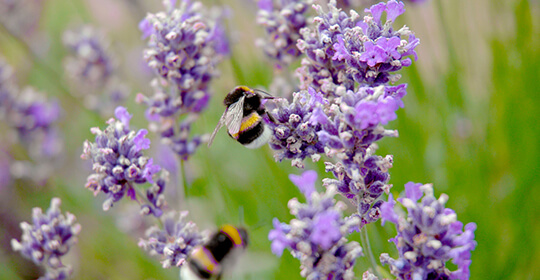A Pollinator Garden Guide for Beginners
By Jeff Bogle
Jul 26, 2024
There are numerous wonderful reasons for attracting pollinators to your backyard and even more benefits of creating a pollinator garden at home. In this Pollinator Garden Guide, you’ll begin to learn how to choose native plants for a pollinator garden, discover pollinator garden design ideas with minimal maintenance, be able to find the best flowering plants to attract bees to your garden, and get some pollinator garden ideas for small spaces such as balconies and patios because you don’t need a massive backyard to cultivate a wildlife habitat around the outside of your house.
Creating a wildlife habitat garden for butterflies and hummingbirds is ideal for many busy homeowners, as well as being something you can do outside in nature by yourself because this is low-maintenance gardening. Much of the work is done at the beginning and knowing how to choose native plants for a pollinator garden. Once planted, you’ll spend more time enjoying the reality of attracting pollinators such as bees and butterflies and less time tending to your pollinator garden.
Low-Maintenance Pollinator Garden Ideas for Beginners
Much like the fantastic Mother’s Day garden ideas you have researched for mom, before you head to the garden center to buy plants for attaching pollinators, you need to decide how much time you want to spend on maintaining your pollinator garden. A large backyard wildlife habitat will demand more of your time because of all the watering, pruning, and, eventually, the time needed to winterize your plants. It’s important to know that pots will dry out quicker than soil in a backyard, so a pollinator garden on a deck or balcony will require more watering and that native plants will likely be the ideal choice for any pollinator garden because they are low-maintenance and will be heartier, attaching more pollinators to your home, and being accustomed to the climate and weather conditions typical to your area.
4 tips for a low-maintenance pollinator garden:
• Tightly pack plants together to prevent weeds and thus, the need to spend time weeding during the hot summer
• Opt for a naturalistic approach, not a traditionally perfectly manicured garden, with grasses and perennials that will grow wild
• Enjoy the life cycle of flowers as they fill in, flower, and go to seed
• Skipping fall cleanup helps to provide seeds and food for birds

The Best Flowering Plants to Attract Bees to Your Garden
To make the best and most resourceful pollinator garden, you should know how to choose native plants for a pollinator garden. A species is considered native if humans are responsible for bringing or attracting it to that region. In other words, it is there naturally. Native bees, for example, are essential to pollinating your favorite foods such as blueberries, melons, and more. It’s not just bees and butterflies, though. Attracting pollinators native to your region of the country include bats, moths, and birds who depend on native plants as essential food sources. Consult this list of plants that are native to your region.
When it comes to what to plant in a pollinator garden to bloom all season long, consider that the best-designed gardens will include a variety of plant species that have different bloom times ranging from early spring to late Autumn. A sensible plan is to use a combination of annuals that bloom for just one year and perennials that return year after year. Addi-tionally, choose plants with a variety of flowers colors, shapes, and heights. This diversity will help to attract a wider array of pollinators to your wildlife habitat garden. When it comes to color, know that bees like yellow flowers, because of course they do, as well as blue, white, and purple.
Remember that native plants are best but here are some great pollinator options:
• Milkweed
• Goldenrod
• Aster
• Bee balm
• Purple coneflower
The Benefits of Creating a Pollinator Garden at Home
There are mental health benefits of creating a wildlife habitat at home, with research showing that spending quality time in green spaces like pollinator gardens can help protect against mood disorders, depression, and stress.
Thinking globally, the benefits of creating a pollinator garden at home include helping bees and butterflies flourish. This is critical right now because they are in danger. The southern plains bumblebee could soon end up on the endangered species list, the rusty patched bumblebee is already on it, and the American bumblebee is threatened, too. Butterflies are in trouble too, with Monarch Butterflies in the East and West nearing extinction. You may be scared of bees but they are so important because they pollinate wild trees and flowers, which support other insects, which in turn supports birds, bats (that eat pesky mosquitos), mammals, and every other animal with essential food and shelter. With the right native pollinator garden plants for specific climate zones, you can work on attracting specific pollinators to your garden, like Monarch butterflies!
Planting a pollinator garden is a wonderful way to provide nectar, pollen, and habitat to native bees and butterflies, and to experience the mental health benefits of nature. Use this Pollinator Garden Guide to get started on attaching pollinators to your wildlife habitat in a backyard, on a back deck, or around your patio.









